 Last additions Last additions |
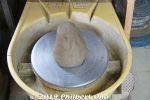
We each got a clump of clay, enough to make several cups or bowls.Mar 22, 2019
|
|
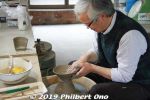
We visited his modest studio for a hands-on pottery lesson. First he demonstrated what we have to do. He made it look so quick and easy. 土の夢陶房 (菊池 秀利・美恵)Mar 22, 2019
|
|
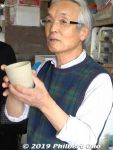
This is Kikuchi Hidetoshi, a local potter who, along with his wife Mie, taught us how to make Izura Tenshin-yaki pottery (五浦天心焼). They moved here in 1998.The Kikuchis are one of several Tenshin-yaki potters in Kita-Ibaraki.Mar 22, 2019
|
|
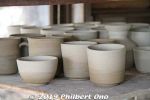
Local pottery called Izura Tenshin-yaki started about 25 years ago by the local Chamber of Commerce. Clay called "gairome" (蛙目) found locally is used. The clay is found in this area under the coal deposits. They collect the clay already exposed on the ground (no digging). This type of clay contains quartz, but the large quartz pieces are removed for pottery.Mar 22, 2019
|
|
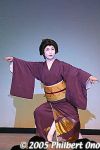
Mt. Fuji and Mt. Asama(富士や浅間). Solo dance by a geisha named Mari(万り).Jan 05, 2019
|
|

Jan 05, 2019
|
|

Jan 05, 2019
|
|

Jan 05, 2019
|
|

Equipment truck and The End. Official marathon site: http://www.lakebiwa-marathon.com/2018 race results: http://www.lakebiwa-marathon.com/history_e.cgi?biwako_73rdJan 03, 2019
|
|

End police car.Jan 03, 2019
|
|

Pickup van for runners.Jan 03, 2019
|
|

The last marathon runner followed by the tailing police car and staff vehicles. I later watched the marathon on my video recorder.Jan 03, 2019
|
|

Jan 03, 2019
|
|

Ride for runners.Jan 03, 2019
|
|

Jan 03, 2019
|
|

Leg cramps perhaps...Jan 03, 2019
|
|

Jan 03, 2019
|
|

Jan 03, 2019
|
|

Jan 03, 2019
|
|

Jan 03, 2019
|
|

Jan 03, 2019
|
|

Jan 03, 2019
|
|

Jan 03, 2019
|
|

Jan 03, 2019
|
|

Jan 03, 2019
|
|

Jan 03, 2019
|
|

Jan 03, 2019
|
|

Jan 03, 2019
|
|

Jan 03, 2019
|
|

Jan 03, 2019
|
|

Jan 03, 2019
|
|

Jan 03, 2019
|
|

Jan 03, 2019
|
|

Jan 03, 2019
|
|

Jan 03, 2019
|
|

Jan 03, 2019
|
|

Jan 03, 2019
|
|

Jan 03, 2019
|
|

Jan 03, 2019
|
|

Not much of a crowd. No cosplayer runners. This is a serious marathon for elite runners.Jan 03, 2019
|
|

I stayed and watched the remaining runners.Jan 03, 2019
|
|

No. 270 NAKAMURA Shogo (中村匠吾) came in 7th at 2:10'51".Jan 03, 2019
|
|

TV cameraman on motorcycle covering marathon runners.Jan 03, 2019
|
|

NHK TV truck tracking the top Japanese runners.Jan 03, 2019
|
|

Jan 03, 2019
|
|

No. 5 Daniele Meucci at Lake Biwa Marathin in 2018.Jan 03, 2019
|
|

Jan 03, 2019
|
|

Kenyan Macharia NDIRANGU (left) glances at Albert KORIR (also Kenyan) at Lake Biwa Canal a few km before the finish.Macharia NDIRANGU soon won the Lake Biwa Marathon in 2:07'53", and Albert KORIR came in second.Jan 03, 2019
|
|

Macharia NDIRANGU (left) and Albert KORIR.Jan 03, 2019
|
|

Macharia NDIRANGU (left) and Albert KORIR leading the 73rd Lake Biwa Mainichi Marathon in 2018.Jan 03, 2019
|
|

Macharia NDIRANGU (left) and Albert KORIR leading the Lake Biwa Mainichi Marathon in 2018.Jan 03, 2019
|
|

The leaders were two Kenyans, Macharia NDIRANGU (left) and Albert KORIR at Lake Biwa Canal a few km before the finish.No. 8 Jake Robertson (New Zealand) is close behind.Jan 03, 2019
|
|

Two police motorcycles lead the way for the leading runners.Jan 03, 2019
|
|

NHK TV broadcasts the marathon live nationwide.Jan 03, 2019
|
|

One hour and 49 min. has passed, according to the official timekeeper.Jan 03, 2019
|
|

Jan 03, 2019
|
|

Lead police car.Jan 03, 2019
|
|

Police cars.Jan 03, 2019
|
|

Jan 03, 2019
|
|

Bus to pick up runners.Jan 03, 2019
|
|

Jan 03, 2019
|
|

About 90 min. later, I went to the Lake Biwa Canal here to watch the runners again. This is a few km before the finish.Jan 03, 2019
|
|

Runners at the 73rd Lake Biwa Mainichi Marathon leaving Ojiyama Stadium.Jan 03, 2019
|
|

Jan 03, 2019
|
|

Jan 03, 2019
|
|

Jan 03, 2019
|
|

Jan 03, 2019
|
|

Jan 03, 2019
|
|

Runners at the 2018 Lake Biwa Mainichi Marathon.Jan 03, 2019
|
|

Runners at the 73rd Lake Biwa Mainichi Marathon at Ojiyama Stadium on March 4, 2018 in Otsu, Shiga Prefecture.Jan 03, 2019
|
|

After 55 sec., runners at the 73rd Lake Biwa Mainichi Marathon at Ojiyama Stadium on March 4, 2018 in Otsu, Shiga Prefecture.Jan 03, 2019
|
|

Jan 03, 2019
|
|

Jan 03, 2019
|
|

They first ran a lap around the stadium track.Jan 03, 2019
|
|

Runners pass by Otsu Mayor Naomi Koshi (standing in red) after she fired the starting gun at the 73rd Lake Biwa Mainichi Marathon on March 4, 2018.Jan 03, 2019
|
|

And they are off!! Good luck to them all!!Jan 03, 2019
|
|

Lake Biwa Mainichi Marathon runners start running after Otsu Mayor Naomi Koshi (in red on the far right) fires the starting pistol at 12:30 pm.Jan 03, 2019
|
|

Biwako Mainichi Marathon runners at the start line in Ojiyama Stadium in Otsu, Shiga.Jan 03, 2019
|
|

Jan 03, 2019
|
|

They paused here first.Jan 03, 2019
|
|

Jan 03, 2019
|
|

Runners walking to the start line as the starting time of 12:30 pm approaches.Jan 03, 2019
|
|

The elite runners are on the front line.Jan 03, 2019
|
|

Jan 03, 2019
|
|

The runners start walking to the start line.Jan 03, 2019
|
|

Abebe Bikila, the legendary marathon gold medalist of the 1964 Tokyo Olympic Games, ran and won the marathon in Shiga in 1965.Jan 03, 2019
|
|

Ojiyama Stadium has served as the start and finish line for the Biwako Mainichi Marathon since 1965.Jan 03, 2019
|
|

Ojiyama Stadium in Otsu.Jan 03, 2019
|
|

Ojiyama Stadium bleachers. No reserved seating.Jan 03, 2019
|
|

Jan 03, 2019
|
|

Ojiyama Stadium's exit and entry gate for the runners.Jan 03, 2019
|
|

Trucks for marathon staff and logistics.Jan 03, 2019
|
|

Police motorcycles for the marathon.Jan 03, 2019
|
|

Police vehicles to be used for the marathon.Jan 03, 2019
|
|

The marathon's lead and end police cars.Jan 03, 2019
|
|
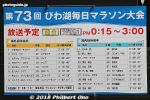
Stats for the top runners in the 73rd Lake Biwa Mainichi Marathon in 2018.Jan 03, 2019
|
|

PR for Expo 2025 in candidate city Osaka. (Osaka won the bid to host Expo 2025.)Jan 03, 2019
|
|

PR for National Sports Festival of Japan to be held in Shiga in 2024.Jan 03, 2019
|
|

Another mascot.Jan 03, 2019
|
|

The Biwako Marathon or Lake Biwa Mainichi Marathon is held annually in March in Otsu. It starts (at 12:30 pm) and finishes at Ojiyama Stadium in central Otsu, near Otsu Shiyakusho-mae Station on the Keihan Ishiyama-Sakamoto Line. Known as one of Japan'a major marathons for top male runners, the Lake Biwa Marathin's 42.195 km course goes along the lake shore and Seta River. The terrain is mostly flat. Before the start of the marathon, there are PR booths near the stadium entrance.Jan 03, 2019
|
|
|
|

Miidera Station platform.Jan 03, 2019
|
|

Miidera Station platform.Jan 03, 2019
|
|

Another entrance to Kano Castle. Thanks to my friend Satomi for driving me around Kano.Jan 03, 2019
|
|
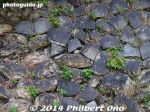
Jan 03, 2019
|
|
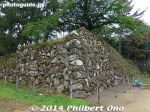
Jan 03, 2019
|
|

Kano Castle stone walls.Jan 03, 2019
|
|
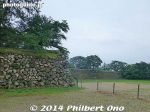
Kano Castle stone walls. Near JR Gifu Station's south exit.Jan 03, 2019
|
|
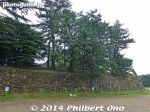
Jan 03, 2019
|
|
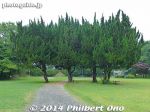
Jan 03, 2019
|
|
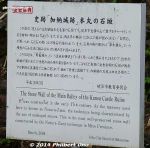
About Kano Castle's Honmaru stone foundation built in the early 1600s.Jan 03, 2019
|
|

Jan 03, 2019
|
|
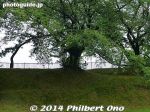
Jan 03, 2019
|
|
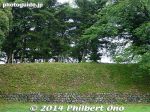
Jan 03, 2019
|
|
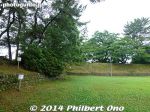
Jan 03, 2019
|
|
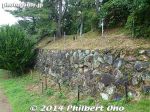
Jan 03, 2019
|
|

Jan 03, 2019
|
|

Jan 03, 2019
|
|
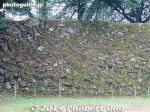
Jan 03, 2019
|
|
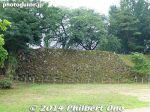
Kano Castle stone foundation.Jan 03, 2019
|
|
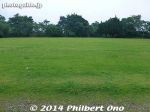
Jan 03, 2019
|
|
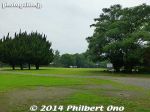
Kano Castle has a large grassy area surrounded by stone walls. No buildings. 加納城Jan 03, 2019
|
|
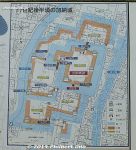
Kano Castle as it looked originally on a map. All the moats were later filled in. 加納城Jan 03, 2019
|
|

Kano Castle as it looked originally in Gifu. 加納城Jan 03, 2019
|
|
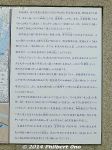
In 1601 when Shogun Tokugawa Ieyasu dismantled Gifu Castle, he ordered Kano Castle to be constructed here south of Gifu Castle.Kano-juku then thrived as a castle town and became Nakasendo's fifth largest shukuba lodging town. Jan 03, 2019
|
|
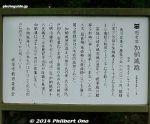
About Kano Castle. As ordered by Shogun Tokugawa Ieyasu, it was built soon after the Battle of Sekigahara in 1600. Parts from Gifu Castle were used to build Kano Castle.Jan 03, 2019
|
|
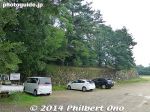
Kano Castle parking lot.Jan 03, 2019
|
|
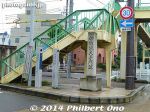
Marker for a gate at Kano Castle.Jan 03, 2019
|
|
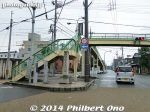
Marker for a gate at Kano Castle.Jan 03, 2019
|
|

Former Kano Town Hall. 旧加納町役場Jan 03, 2019
|
|
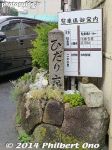
Another road marker. "Go left for Kyoto"Jan 03, 2019
|
|
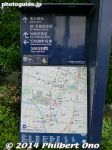
Road directions and map in English in Kano, Gifu.Jan 03, 2019
|
|
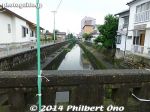
Kosatsu bulletin board was at one end of this bridge over a small river.Jan 03, 2019
|
|
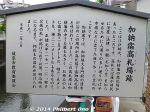
About the Kosatsu bulletin board in Kano-juku. It posted local laws and regulations and other official notices from the local ruler. 高札Jan 03, 2019
|
|
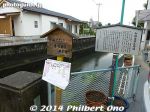
Spot where the Kosatsu bulletin board was in Kano-juku. It was originally on a stone foundation. This spot used to have many people passing by as it was near the castle's front gate. 加納宿 高札Jan 03, 2019
|
|

About the Nakasendo road marker at Kano-juku. It was at the intersection of the Nakasendo and Gifu Roads.Jan 03, 2019
|
|
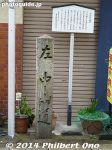
Nakasendo road marker at Kano-juku. "Go left for Nakasendo." Originally built in 1750. 加納宿 中山道道標Jan 03, 2019
|
|

Kano-juku road marker.Jan 03, 2019
|
|
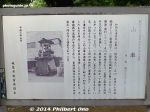
Kano used to have nine festival floats, but all except one was destroyed by World War II bombing of Gifu in 1945. The shrine buildings were also destroyed.Jan 03, 2019
|
|
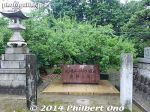
Monument marking the birthplace of Gifu's Boy Scouts.Jan 03, 2019
|
|
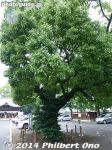
Jan 03, 2019
|
|

Kano Tenmangu Shrine's ema prayer tablet.Jan 03, 2019
|
|
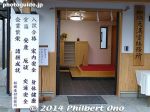
Kano Tenmangu Shrine office.Jan 03, 2019
|
|
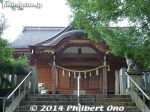
Kano Tenmangu Shrine worships Tenjin, aka Sugawara no Michizane, the god of scholarly learning. This is the Honden hall. 本殿 Jan 03, 2019
|
|
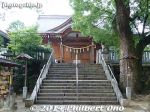
Kano Tenmangu Shrine. Jan 03, 2019
|
|
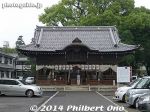
Kano Tenmangu Shrine's Haiden worship hall. 拝殿Jan 03, 2019
|
|
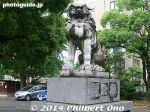
Koma-inu lion dog.Jan 03, 2019
|
|
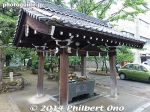
Wash basin.Jan 03, 2019
|
|
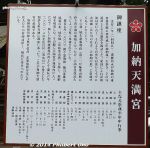
About Kano Tenmangu Shrine. 加納天満宮Jan 03, 2019
|
|
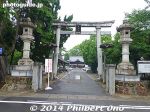
Entrance to Kano Tenmangu Shrine. 加納天満宮Jan 03, 2019
|
|
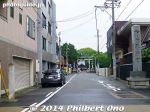
Way to Kano Tenmangu Shrine. Jan 03, 2019
|
|
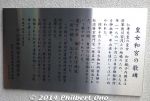
About Princess Kazunomiya's poem and monument.Jan 03, 2019
|
|
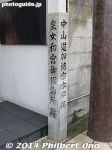
Marker for Kano-juku's Honjin. 本陣Jan 03, 2019
|
|
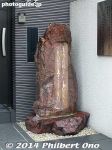
Monument for the poem Princess Kazunomiya composed while in Kano-juku. This is her handwriting. Monument was built in 2002.Jan 03, 2019
|
|
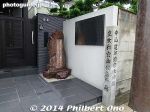
Marker for Kano-juku's Honjin where Princess Kazunomiya once stayed on Oct. 26, 1861 on her way from Kyoto to Edo to marry Shogun Tokugawa Iemochi. 本陣Jan 03, 2019
|
|
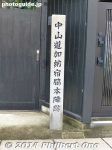
Marker for Kano-juku's Waki Honjin. 脇本陣Jan 03, 2019
|
|
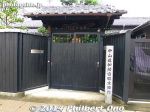
Marker for Kano-juku's Waki Honjin. 脇本陣Jan 03, 2019
|
|
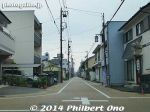
Nakasendo Road in Kano-juku.Jan 03, 2019
|
|

Nakasendo Road in Kano-juku.Jan 03, 2019
|
|

SignsJan 03, 2019
|
|
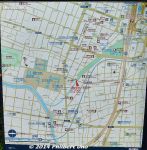
Map of Kano-juku in English. Gifu Station is on the upper right, and Kano Castle is on the left.It had the Honjin, Waki-Honjin, and 35 lodges. The population was 2,728.Jan 03, 2019
|
|
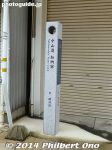
Not much is left except for a few markers indicating the location of the Waki Honjin, Honjin, and other features. Tenmangu Shrine and Kano Castle's stone walls are the major sights.Jan 03, 2019
|
|

Inside JR Hanwa Line train.Jan 02, 2019
|
|

JR Hanwa Line at JR Otori Station. 鳳駅Jan 02, 2019
|
|

JR Otori Station. 鳳駅Jan 02, 2019
|
|

Otori shopping arcade, but the shops were closed on New Year's Day.Jan 02, 2019
|
|

Otori shopping arcade.Jan 02, 2019
|
|

Manhole in Sakai, Osaka.Jan 02, 2019
|
|

Otori Danjiri Matsuri is held in Oct. Similar to the one in Kishiwada.Jan 02, 2019
|
|

Stay away from brick walls if the earth starts to shake.Jan 02, 2019
|
|

Torii for the back exit.Jan 02, 2019
|
|

Tree roots.Jan 02, 2019
|
|

Secondary shrine for Amaterasu Sun Goddess and Sugawara Michizane. 大鳥美波比神社Jan 02, 2019
|
|

The shrine suffered major damage from Typhoon No. 21 last Sept. Trees were damaged.Jan 02, 2019
|
|

Jan 02, 2019
|
|

Otori Taisha shrine suffered major damage from Typhoon No. 21 in Sept.2018. Part of the roof on the main shrine was damaged.Jan 02, 2019
|
|

You can walk around Otori Taisha's main shrine. Otori Taisha's architecture is called Otori-zukuri.Jan 02, 2019
|
|

OmikujiJan 02, 2019
|
|

New Year's arrows.Jan 02, 2019
|
|

Otori Taisha's ema prayer tablet for the white bird.Jan 02, 2019
|
|

This is Otori Taisha's regular-size ema prayer tablet for the Year of the Boar 2019.Jan 02, 2019
|
|

Next to Otori Taisha's Haiden hall was this jumbo ema prayer tablet for the Year of the Boar 2019. A white boar steadily walking up a hill toward its goal symbolized by the rising sun.Jan 02, 2019
|
|

Especially popular was the omikuji.Jan 02, 2019
|
|

Back of the Haiden hall.Jan 02, 2019
|
|

Patient people.Jan 02, 2019
|
|

No wonder it took so long to get to the shrine. The praying area is quite narrow.Jan 02, 2019
|
|

Offertor pit at Haiden worship hall on New Year's Day 2019.Jan 02, 2019
|
|

Otori Taisha shrine's Haiden worship hall on New Year's Day 2019, Sakai, Osaka. 拝殿Jan 02, 2019
|
|

Otori Taisha shrine's Haiden worship hall on New Year's Day 2019, Sakai, Osaka. 拝殿Jan 02, 2019
|
|

Otori Taisha shrine's Haiden worship hall on New Year's Day 2019, Sakai, Osaka. 拝殿Jan 02, 2019
|
|

Jan 02, 2019
|
|

And closer...Jan 02, 2019
|
|

Getting closer the shrine on the left.Jan 02, 2019
|
|

Wash basin, but hardly anyone used it. People didn't want to lose their place in line.Jan 02, 2019
|
|

I've noticed piles of trash at large Osaka shrines.Jan 02, 2019
|
|

This is a statue of Yamato Takeru (日本武尊) at Otori Taisha. He went around Japan and defeated his enemies until he finally met his demise on Mt. Ibuki in Shiga Prefecture where sought to kill an evil god. This god disguised himself as a white boar (another version says it was a serpent) who sprayed a poisonous mist that sickened Yamato Takeru.
He eventually died and when his body was cremated and buried in Kameyama in Mie Prefecture, his spirit rose from the ashes as a great white bird. This bird landed in a few places before finally landing here in Sakai, Osaka, where this Otori Shrine was built. "Otori" means "Big Bird" (not like Sesame Street, but more like a great swan or firebird).Jan 02, 2019
|
|

If you've never been to this shrine, it's impossible to tell how far or how near you are. The path makes a few turns.Jan 02, 2019
|
|

Standing still too often.Jan 02, 2019
|
|

Barrels of sake offered to the shrine.Jan 02, 2019
|
|

Much of the time we stood still. Didn't move much.Jan 02, 2019
|
|

The path to the shrine is quite narrow. It took a while to get to the shrine as we inched along.Jan 02, 2019
|
|

Suddenly the path to the shrine got crowded and later this line of people stopped movng. The first torii to Otori Taisha.Jan 02, 2019
|
|
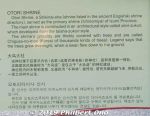
About Otori Taisha in English, Korean, and Chinese.Jan 02, 2019
|
|

Entrance to Otori Taisha on New Year's Day 2019.Jan 02, 2019
|
|

Otori Taisha (officially named "Otori Jinja") shrine is dedicated to Yamato Takeru (日本武尊), a very famous, legendary warrior prince. This is the headquarters shrine of all Otori shrines (大鳥神社) in Japan. Short walk from Otori Station (鳳駅) on the JR Hanwa Line that connects to Tennoji on the Osaka Loop Line.Jan 02, 2019
|
|

The shrine is in the small forest named "Chigusa-no-mori." Not very many people were here so I thought it would be quick and easy to see this shrine. But I was wrong.Jan 02, 2019
|
|

Sumiyoshi Taisha Station on the Nankai Line.Jan 02, 2019
|
|

Sumiyoshi Taisha Station on the Nankai Line.Jan 02, 2019
|
|

Sumiyoshi Taisha Station's Shop Nankai shopping arcade.Jan 02, 2019
|
|

Manhole in Sumiyoshi Ward, Osaka.Jan 02, 2019
|
|

The old and now -closed Sumiyoshi Koen Station for the tram.Jan 02, 2019
|
|

Hankai Line tram at Sumiyoshi Torii-mae stop in front of Sumiyoshi Taisha. 阪堺線 住吉鳥居前停留場Jan 02, 2019
|
|

Hankai Line tram at Sumiyoshi Torii-mae stop in front of Sumiyoshi Taisha. 阪堺線 住吉鳥居前停留場Jan 02, 2019
|
|

Sumiyoshi Park is across the train tracks from Sumiyoshi Taisha. Big park. 住吉公園Jan 02, 2019
|
|

Food stalls on the way out.Jan 02, 2019
|
|

Ama-zake was good too.Jan 02, 2019
|
|

Jan 02, 2019
|
|

Free serving of hot ginger tea. That was good. Clears your nasal passages.Jan 02, 2019
|
|

Grand tree at Sumiyoshi Taisha, Osaka.Jan 02, 2019
|
|

Grand tree at Sumiyoshi Taisha, Osaka.Jan 02, 2019
|
|

Decorative paddles with a cat.Jan 02, 2019
|
|

Cat rice paddles.Jan 02, 2019
|
|

Small cat figurines for sale.Jan 02, 2019
|
|

About Hattatsu worship. 住吉大社 初辰まいりJan 02, 2019
|
|

About Hattatsu worship. 住吉大社 初辰まいりJan 02, 2019
|
|

Larger beckoning cat figurines at Nankun-sha cat shrine at Sumiyoshi Taisha.Jan 02, 2019
|
|

Tiny beckoning cat figurines at Nankun-sha cat shrine at Sumiyoshi Taisha.Jan 02, 2019
|
|

They have tiny, medium, and large cat statues that you can collect.Jan 02, 2019
|
|

Nankun-sha cat shrine altar (楠珺社). It promotes "Hattatsu" worship. At Sumiyoshi Taisha, Osaka. 初辰まいりYou supposed to come here and worship monthly and collect a total of 48 cat figurines over a period of 24 years. Then you'll get the jackpot of family safety and business prosperity. It's based on a play of words with "48" (shijuhachi) that can be pronounced similarly to "shiju-hattatsu (始終発達) which means "constant advancement or development."Jan 02, 2019
|
|

Inside Nankun-sha cat shrine (楠珺社). Jan 02, 2019
|
|

Nankun-sha cat shrine (楠珺社). Jan 02, 2019
|
|

Nankun-sha cat shrine (楠珺社). Jan 02, 2019
|
|

Banners for the Nankun-sha cat shrine (楠珺社). It's behind Hongu No. 1.Jan 02, 2019
|
|

Small shrine for a great tree.Jan 02, 2019
|
|

New Year's souvenir arrows.Jan 02, 2019
|
|

Rear of Wakamiya Hachimangu.Jan 02, 2019
|
|

Wakamiya Hachimangu Shrine, a secondary shrine of Sumiyoshi Taisha. Worships Hachiman (Emperor Ojin), the guardian deity of the samurai. 若宮八幡宮Hachiman (Emperor Ojin) was the son of Empress Jingu.Jan 02, 2019
|
|

Wakamiya Hachimangu Shrine, a secondary shrine of Sumiyoshi Taisha. The torii is unusual with the middle beam not sticking out the sides. 若宮八幡宮Jan 02, 2019
|
|

Regular ema prayer tablet with Sorihashi Bridge. ¥800 絵馬Jan 02, 2019
|
|

Sumiyoshi Taisha's ema prayer tablet for 2019, Year of the Boar. ¥1000 絵馬Jan 02, 2019
|
|

Hongu No. 4 shrine.Jan 02, 2019
|
|

Hongu No. 3 shrine offertory pit.Jan 02, 2019
|
|

Hongu No. 3 shrine in front of the altar protected by netting.Jan 02, 2019
|
|

Rear view of Hongu No. 3 shrine.Jan 02, 2019
|
|

Rear view of Hongu No. 3 and No. 4 shrines. Sumiyoshi-zukuri architectureJan 02, 2019
|
|

Side view of Hongu No. 3.Jan 02, 2019
|
|

Sumiyoshi Taisha Hongu No. 3 and No. 4 shrines. Both are National Treasures. Hongu No. 4 worships Jingu Kogo (Empress Jingu 神功皇后).(第三本宮・第四本宮)Jan 02, 2019
|
|

Sumiyoshi Taisha Hongu No. 3 shrine, National Treasure. Worships Uwatsutsu no Onomikoto (表筒男命). (第三本宮)Jan 02, 2019
|
|

Hongu No. 3 shrine. (第三本宮)Jan 02, 2019
|
|

Hongu No. 4 shrine and Hongu No. 2 shrine.Jan 02, 2019
|
|

Hongu No. 2 shrine fence.Jan 02, 2019
|
|

Hongu No. 2 shrine. The Sumiyoshi-zukuri architecture has decorative ridgepoles.Jan 02, 2019
|
|
| 71466 files on 284 page(s) |
 |
 |
39 |  |
 |
|